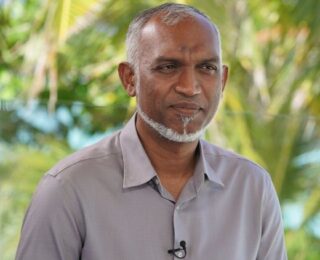Image source: Bloomberg
Delhi, Jan 07: A tweet from a Maldives minister following Prime Minister Narendra Modi’s visit to the Lakshadweep archipelago has sparked controversy on social media. PM Modi’s visit to the smallest Union Territory, consisting of 36 islands covering an area of 32 sqkm, was perceived as an effort to boost tourism in the region.
In the tweet, the minister accused India of targeting the Maldives and asserted that India faces considerable challenges in competing with the Maldives in beach tourism. This tweet emerged after PM Modi’s posts on X (formerly Twitter) regarding snorkeling in the Lakshadweep gained popularity, leading social media users in India to suggest the island Union Territory as an alternative tourist destination to the Maldives.
Recent months have witnessed strained ties between India and the Maldives, particularly since President Mohamed Muizzu assumed power in November 2023. During his election campaign, President Muizzu pledged to remove a small contingent of about 75 Indian military personnel and alter the Maldives’s “India first” policy.
President Muizzu is set to visit China on Monday, following an invitation from Chinese President Xi Jinping. This move aligns with President Muizzu’s perceived pro-China stance, as he defeated his India-friendly predecessor in the presidential runoff in September.
In contrast to past leaders, President Muizzu’s predecessor had visited India first, reflecting the robust bilateral ties and the Maldives’ geographical proximity to India. However, the new Maldives President has indicated a shift by prioritizing ties with China.
The strained relations were evident when President Muizzu met PM Modi in Dubai in December 2023, where discussions included the withdrawal of Indian military personnel and a review of over 100 bilateral agreements between the two countries. The new Maldives Vice President’s recent visit to China further underscores the evolving dynamics in the region.
Despite these developments, the Maldives holds strategic importance for India as a key maritime neighbor in the Indian Ocean Region. Its proximity and location at the crossroads of commercial sea lanes in the Indian Ocean contribute to its significance in India’s regional initiatives such as SAGAR (Security and Growth for All in the Region) and the ‘Neighbourhood-First Policy.’

